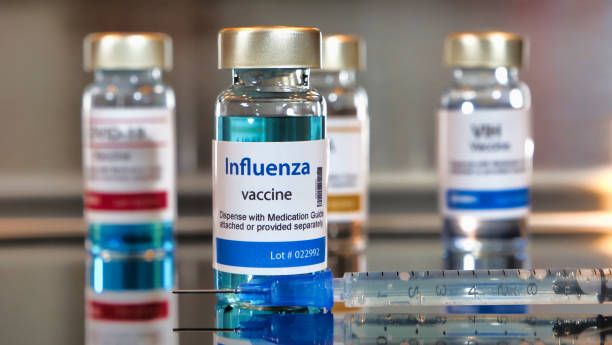In the US, the efficacy of influenza vaccines changes annually, influenced by the alignment between the strains targeted by the vaccine and those circulating. Evaluating the vaccine effectiveness (VE), and how well it protects against the flu, is vital for developing public health measures to reduce the impact of the flu. Preliminary estimates of the vaccine's effectiveness for the 2023-24 season show that it lowers the risk of medically attended flu virus infections for children and adults. The Centers for Disease Control and Prevention (CDC) advises that everyone in these groups who has not yet received their vaccine this season should do so, especially as the flu remains prevalent in local communities.
When analyzing VE by influenza type, VE against influenza A varied from 46% to 59% for children and adolescents, and from 27% to 46% for adults. In contrast, VE against influenza B was significantly greater, with pediatric patients in outpatient settings experiencing a range from 64% to 89%, and adults in diverse settings seeing a range from 60% to 78%. This method provides estimates of VE against influenza virus infection requiring medical attention. The research revealed that the VE differed across age groups, settings, and types of the virus for children and adolescents aged 6 months to 17 years.
The VE in preventing flu-related outpatient visits was estimated to range from 59% to 67%, and in preventing flu-related hospitalizations varied from 52% to 61%. For adults aged 18 and older, the vaccine's effectiveness in reducing outpatient visits due to influenza ranged from 33% to 49%, and its effectiveness against hospitalizations was between 41% and 44%.
3 Key Takeaways
- The effectiveness of the influenza vaccine varies annually and is influenced by how well the vaccine strains match the circulating virus strains.
- The data suggest that the flu vaccine, particularly the QIV-HD, is associated with a significant reduction in hospitalizations for pneumonia or influenza and all-cause hospitalizations compared to the QIV-SD.
- The lower vaccination coverage observed in the current season compared to previous seasons and before the COVID-19 pandemic underscores the challenge of achieving sufficient vaccination rates to maximize public health benefits.
“Influenza vaccination coverage in the United States has been lower this season than in the previous season and lower than coverage before the COVID-19 pandemic. In the current analyses, fewer than one-half of test-negative control patients had received influenza vaccine in all VE networks and among enrollees of most age groups,” according to the CDC. “The public health benefit of annual influenza vaccination depends on both vaccine effectiveness and vaccination coverage.”1
To estimate the interim VE for the flu season, researchers employed a test-negative case-control study method, leveraging data from four VE networks. This approach involved assessing the vaccination status of patients aged 6 months and older who sought medical attention for acute respiratory illnesses, comparing their influenza test results, and determining if they were positive or negative for the virus.
Limitations begin with the small sample sizes preventing the estimation of VE for certain age groups and environments. Despite adjustments for potential confounders, the risk of unmeasured confounding factors, such as underlying health conditions or previous vaccination history, remains. Additionally, the possibility of misclassification of vaccination status exists, particularly when vaccination data is self-reported or when the vaccine was administered outside the healthcare system. For these analyses, individuals who received one or more doses of the 2023–24 flu vaccine were classified as vaccinated.
Based on a recent report from Contagion, the vaccine was associated with lower incidence rates of hospitalizations for pneumonia or influenza and all-cause hospitalizations compared with QIV-SD with trends evident independent of influenza circulation levels. The exploratory results suggest a number needed to treat of 65 (95% CI 35-840) persons with QIV-HD compared to QIV-SD to prevent 1 additional all-cause hospitalization per season.2
The study involved 12,477 participants, those who received QIV-HD had only 10 events of hospitalizations for pneumonia or influenza compared to those who received QIV-SD with 33 events. The risk of such hospitalizations was 70% lower with QIV-HD. The total number of hospitalizations for any reason was also lower in the QIV-HD group, with 647 events compared to 742 events in the QIV-SD group, indicating a 13% reduction.
“Effectiveness estimates for all significantly reduced outcomes (hospitalizations for pneumonia or influenza, all-cause hospitalizations, and all-cause death) consistently favored QIV-HD in our temporal analysis,” according to the investigators. “The observed effectiveness even before active influenza transmission during the study season may point to beneficial immunomodulatory effects of vaccination independent of the prevention of overt influenza infection.”2
All in all, research shows the importance of flu vaccines, comparing QIV-HD and QIV-SD, in reducing severe flu outcomes and hospitalizations. Early data for the 2023-24 flu season emphasizes their role in public health by preventing serious cases and promoting widespread vaccination to combat the flu's unpredictability. The CDC focuses on boosting vaccination rates for both personal and community health benefits.
References
- CDC. Interim Estimates of 2023–24 Seasonal Influenza Vaccine Effectiveness — United States. Published February 29, 2024. Accessed March 6, 2024. https://www.cdc.gov/mmwr/volumes/73/wr/mm7308a3.htm?s_cid=mm7308a3_w
- Abene S. High-Dose Influenza Vaccine (QIV-HD) Shows Promise Results in Reducing Hospitalizations. Contagion. Published February 12, 2024. Accessed March 6, 2024. https://www.contagionlive.com/view/high-dose-influenza-vaccine-shows-promise-results-in-reducing-hospitalizations


















